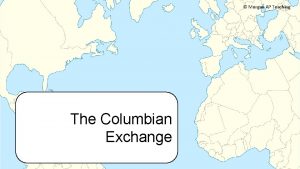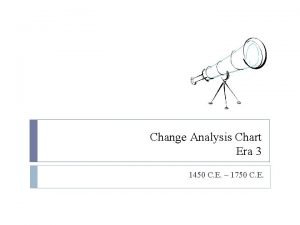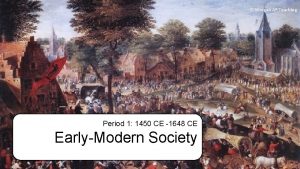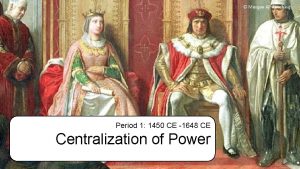Morgan AP Teaching Period 1 1450 CE 1648







- Slides: 7

© Morgan AP Teaching Period 1: 1450 CE -1648 CE The Price Revolution and Commercialization

© Morgan AP Teaching Price Revolution • The influx of New World goods and silver had a dramatic impact on Europe: the Price Revolution–a drastic increase in goods, money, and prices • Essentially, the massive flow of Spanish silver and American goods into Europe provided Europeans with plenty of cash from silver and trade • This in return drove the prices of goods up very quickly including the demand prices for food, which was in short supply due to inefficient farming methods • To accommodate this, lords and governments increasingly closed off their land to the peasants to harvest more efficiently • As a result, land owners now became substantially more rich —especially the ones who fenced off and organized their land

© Morgan AP Teaching The Enclosure Movement • During the Middle Ages, European economies were dominated by large landowners who used peasant labor to grow and harvest crops • Known as peasant agriculture, these peasants were bound to the land of their lord, paying him taxes in grain, while being protected by the lord from hardship • The land they lived on was largely unorganized, and called common land that any could use for farming, foraging, or hunting • However, beginning in England the 16 th century, due to the Price Rev, Lords began to close off their land from the peasants to farm for large profits • Fences were built, and the peasants who remained were used in a more organized manner to plant and harvest crops

© Morgan AP Teaching Commercialization • The Enclosure Movement was the beginning of commercialization in Europe—the harvesting and selling of crops by land owners for profit • By the 16 th century, some of the new economic ideas such as printed money banks, loans, and credit had made their way into Europe through Italy • No longer did simply having land mean you had power, to increase your power, you needed to sell goods, and that meant commercializing agriculture • The peasants did not go quietly however, many openly rebelled when they were stripped of their peasant rights • Kett’s Rebellion was on such example in England in 1549

© Morgan AP Teaching Mercantilism • This drastic rise in money supply, as well as new systems of banking and loans allowed for more investment opportunities • This expanded joint-stock investment, as more people were able to invest in exploration, as well as start new companies • Additionally, increased money and income resulted in more taxes for govs to fund exploration, thus enabling more colonization and charter companies to form • Two excellent examples of successful charter companies are the British East India Company and the Dutch East India Company • These companies then established new settlements in the New World, and brought back the goods and the profits to enrich the mother country


© Morgan AP Teaching Agriculture • While much of Western Europe was commercializing, exploring, and profiting during the 16 th century, the people of Europe were still mostly peasants • While many were making their way to the cities, peasant agriculture was, during the 16 th and 17 th centuries, still the dominant economic form • In Eastern Europe, almost no commercialization occurred • Poland, Hungary, and Russia all remained largely agricultural and tied to serfdom • As a result, in Eastern Europe land-based nobles would hold the majority of the power and prevent Eastern Europe from growing economically













